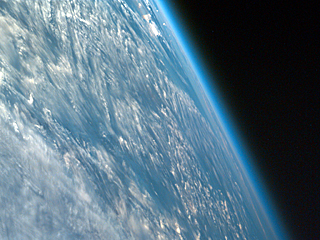
The Earth's atmosphere is showcased in this highly oblique shot of the Earth taken from space. The atmosphere, composed of 78 percent nitrogen, 21 percent oxygen and 1 percent other constituents, shields us from falling meteors, as well as nearly all harmful radiation coming from the sun and other stars. The upper atmosphere also contributes to weather and climate on Earth. (Public domain; Courtesy of NASA/JPL/UCSD/JSC.)
Instructor(s)
Prof. Jesse Kroll
MIT Course Number
1.84J / 10.817J / 12.807J
As Taught In
Fall 2013
Level
Graduate
Course Description
Course Features
Course Description
This course provides a detailed overview of the chemical transformations that control the abundances of key trace species in the Earth's atmosphere. Emphasizes the effects of human activity on air quality and climate. Topics include photochemistry, kinetics, and thermodynamics important to the chemistry of the atmosphere; stratospheric ozone depletion; oxidation chemistry of the troposphere; photochemical smog; aerosol chemistry; and sources and sinks of greenhouse gases and other climate forcers.


